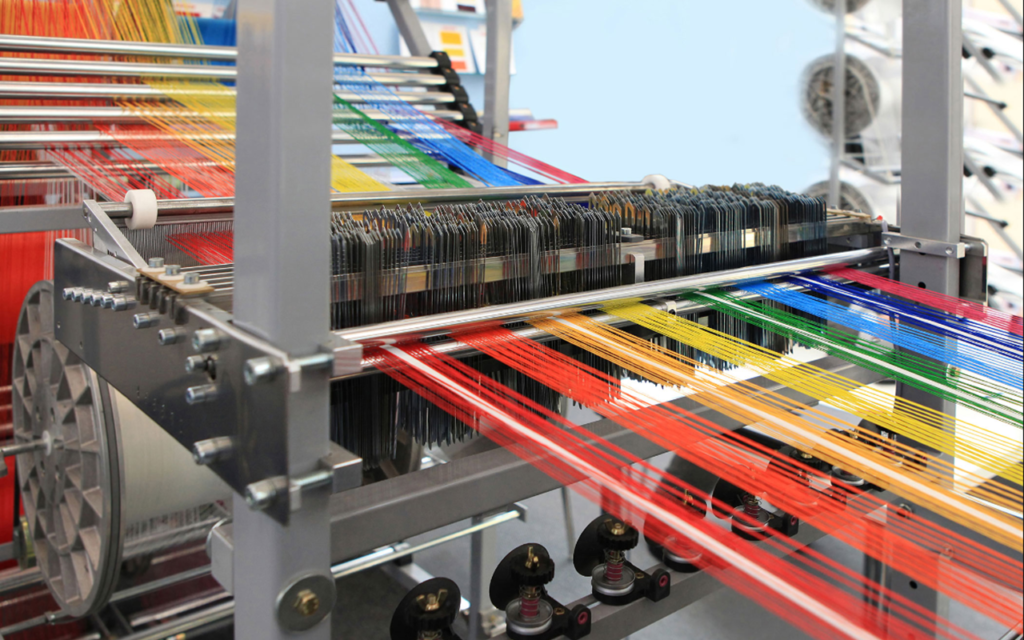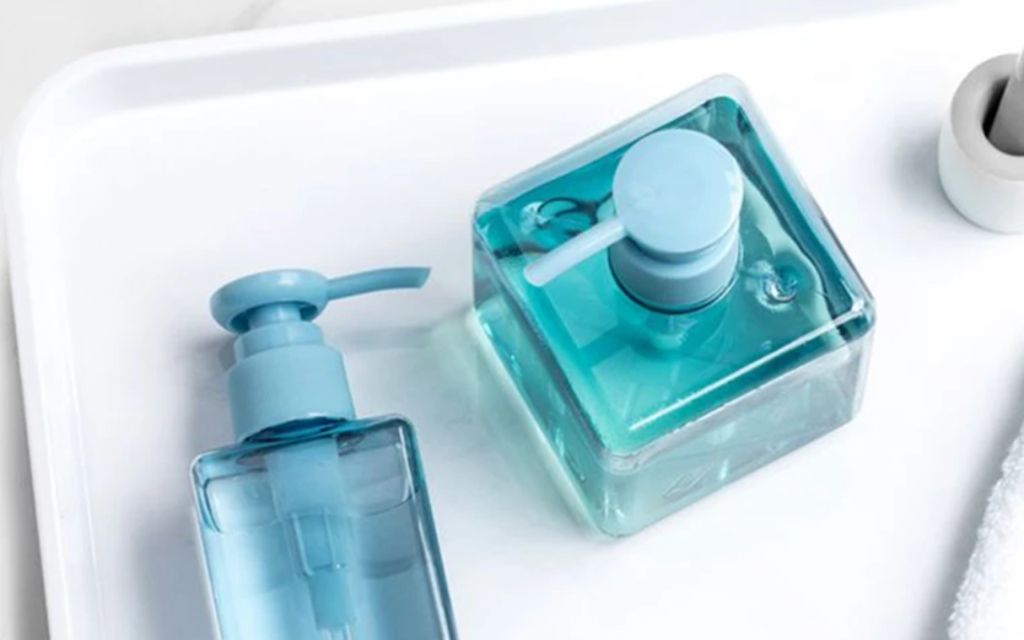Methylcellulose has the characteristics of toughness, flexibility, transparency, and adhesiveness, as well as its compatibility with common textile sizing agents and modifiers, making it suitable for warp sizing and fabric glazing. For example, 2.5% water-insoluble MC is dissolved in 5% NaOH aqueous solution to treat fabrics. After removing excess water, the fabric is coagulated with a 10% acetic acid aqueous solution and dried. The mixture of MC and surfactant can also be used as a sizing liquid for cotton fabrics to size the warp. For example, a 5% to 15% mixture containing 25% to 90% MC and 10% to 75% N-acetylethanolamine is used as sizing liquid for synthetic or natural yarns. It has strong adhesion to the surface of the yarn, and 0.05% of wetting agents such as alkyl aryl polyether alcohols and defoamers such as tributyl phosphate can be added to it. 0.5% to 2% of gluconic acid can be added to improve the adhesion to nylon yarns. MC can also be dissolved in the dispersant of polyethylene powder and used for thermoplastic fabric shaping. Treating polyester fibers with a light alkaline aqueous solution of MC can give the fabric a silky feel after a short heat treatment (>120℃ and <polyester melting point).
Since 1940, MC has proven to be highly effective in thickening textile printing and dyeing paste. High-viscosity MC can be used to prepare oil-water emulsified printing and dyeing paste with excellent printing and dyeing properties. For many years, MC printing and dyeing paste has been a reliable choice for synthetic fibers or fabrics blended with cotton, and can continuously print and dye polyester and cotton blended fabrics. Adding 3% to 4% MC as a thickener to the acid dyes for printing and dyeing synthetic fibers can achieve the required viscosity, ensuring this printing and dyeing paste has good covering power. For instance, adding MC (DS=0.7~2.6) to cationic dyes or disperse dyes to treat acrylic fiber products, it can maintain dimensional stability. Using MC as a thickener to print and dye polyamide fibers or fabrics has better printing and dyeing effects than the general use of resin thickening, further demonstrating its effectiveness.

MC is dissolved in propylene glycol, and after cooling, the resulting solid gel can be used to glue or impregnate felt. Spraying MC and urea-formaldehyde polycondensate on the surface of wool blankets feels soft.
One of the unique applications of MC is in the production of non-sticky, non-agglomerated, and non-adhesive tape. By adding MC and other dispersed slurry to natural rubber and impregnating or coating cotton cloth, a tape with these unique properties can be created. This innovative use of MC showcases its potential in various industries, sparking curiosity about its other possible applications.
Pharmaceutical and food industries
Because methylcellulose is non-toxic and harmless, has adhesion and film-forming properties, and thickens and disperses in liquids, it can be used as a binder, film-forming agent, emulsifier, and suspending agent for drugs and foods. It has no nutritional value and does not undergo metabolism.
MC has many uses in medicine using its film-forming properties, such as preparing sulfadiazine in MC film to treat burns and trauma, reducing the exuded serum, allowing the drug to penetrate gradually over time, and leaving no scars after healing. In terms of drug coating, MC (10mPa·s) can be used as a film-forming agent and dissolved in a volatile solvent with polyethylene glycol 1000 or a small amount of dye and then sprayed on the surface of the tablet in an air suspension machine to form a coating of appropriate thickness; or MC and arsenic-free shellac can be dissolved in ethanol to prepare drug surface coating; MC (700mPa·s), gum arabic, refined sugar and organic solvent can be prepared into syrup and coated on tablets in a coating pan; MC can be dissolved in ethanol and chloroform and sprayed on tablets, which is both rapid and economical, and the coating is uniform.
MC, with its versatile properties, finds application in a wide range of products. For instance, it serves as the base material in freeze-dried topical gels for tetracycline and hydrocortisone, and is a key component in various water-oil emulsified ointments.
In addition, MC can be used as an emulsifier for castor oil to preserve castor oil emulsions, and its stability is excellent. MC is formulated in procaine aqueous solution and has hydrolysis resistance; MC is added to vitamin Biz injection, which has a sustained release effect, making the drug effect lasting and has the effect of prolonging the impact of B₁₂; MC is added to eye drops to adjust the viscosity instead of tears to treat dry eye symptoms; eye wash for ophthalmitis contains MC, which has specific effects in adjusting its viscosity, contact time and prolonging the effect.
Oil-soluble vitamins can be combined with MC and dry protein to obtain water-soluble medicinal powders or used in food with preservative and antioxidant effects.
MC-treated sanitary products, such as pads, cloths, or towels, offer enhanced performance. These products, made from powdered MC treated with glyoxal, can absorb 8 to 10.6 times the amount of water, ensuring leak resistance even under pressure.
MC has been used for beverage stabilization and frozen food dehydration prevention for a long time. It can bind meat bread to keep it moist and prevent it from burning. After coating many nutritious foods with MC and low methoxyl pectin ester solution, the strength and oil resistance of brittle foods can be improved, the oil in the food will not seep out, and the foods can be prevented from sticking to each other. It can be prepared with spices and pigments to make artificial fruit pulp as the filling of bread and candy. In foods containing protein (such as fish protein), MC, sodium alginate, and water are added to make a slurry, and then a tiny amount of calcium chloride or calcium lactate is added to make it into a gel, which can be made into sour and spicy or not sweet food. It is heat stable and can also be frozen. MC can also thicken cold drinks such as ice cream, ice milk, or frozen yogurt.
Daily chemical industry

With its remarkable dispersibility, methylcellulose solution is a versatile dispersant in the papermaking industry. It enhances the mechanical strength and other properties of paper, showcasing the diverse applications of MC.
MC has good adhesion and can be used as a binder for fillers and pigments. It is also used to make pencils and chalk.
MC has excellent dispersibility and adhesion and can be used as a component of shoe polish and detergents; due to its non-toxicity and other properties, MC has long been used in toothpaste, tooth powder, moisturizing oils, soap liquid, hair loss agents, and other components. At 0-37°C, the soap liquid gel does not separate or lose its luster; MC can be used as a filler in hard and soft soaps, and the fat content can be reduced by 30%-32%. After kneading and drying triethanolamine stearate, sodium salt of sulfonic acid, higher alcohol, starch, and MC aqueous solution, triethanolamine stearate soap can be pressed. For example, sodium stearate and MC can be made into disposable hollow and brittle cone soap products.
Since MC can form a tough and firm adhesive film, it can be used as a paste adhesive in the leather manufacturing industry and for leather pasting. Before leather dyeing, it can be treated with MC, starch, and alginate to prevent the color from becoming darker.
In the tobacco industry, the film-forming property of MC is harnessed to add crushed tobacco powder to a solution composed of MC, additives, water dichloromethane, etc. This solution is then used to create tobacco shreds, rolling paper, or even cigarette filters with attached activated carbon. The resulting film has a higher wet strength and contains less nicotine and tobacco paste in its smoke than paper rolls, showcasing the unique properties of MC in this industry.




